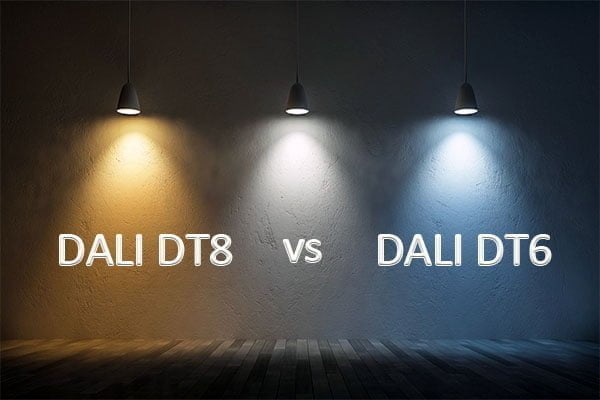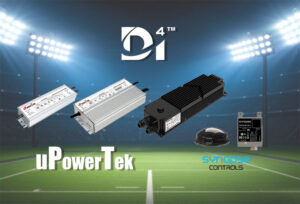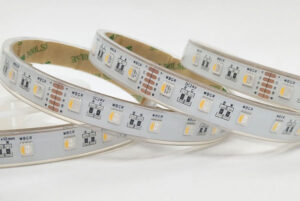Digital Addressable Lighting Interface (DALI) is a protocol for digital lighting control that can easily install a robust, scalable, and flexible lighting network. DALI is currently the most commonly used optical digital protocol. When talking about DALI control, we often hear people say DT6 or DT8. What do they mean? This article will take you to understand their definitions and differences.
DALI Device Types
The DALI protocol is maintained by the Digital Lighting Interface Alliance (DiiA), a global alliance of lighting companies that aims to develop the market for lighting control solutions based on DALI devices.
The original development purpose of DALI was to allow digital control, configuration and query of fluorescent lamp ballasts to replace the simple, one-way, broadcast-like application of 0/1-10V dimming. With DALI, broadcast options are also available; in addition, through simple configuration, each DALI device can be assigned a separate address, allowing digital control of a single device.
What are DT6 and DT8?
DALI has a two-way communication function with lamps. You can determine whether the lamps are working properly and their lighting intensity level. The DALI protocol has been extended many times from the beginning, and each new device has been assigned a new number (device type X = DTX). The latest important updates are emergency light (DT1), LED (DT6) and RGB/tunable white light control (DT8). Figure below shows the components of the IEC 62386 standard. DALI DT8 and DALI DT6 are essentially DALI’s control systems. While one is for color controllable luminaires, the other defines the control gears scope.
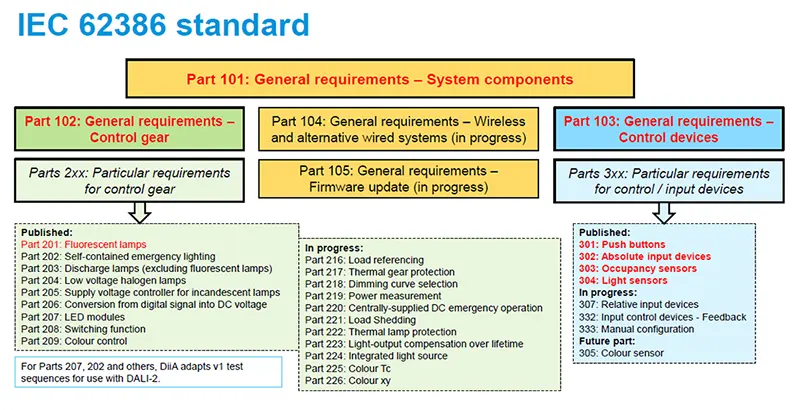
But how are their respective systems designed to handle their individual controls?
Despite their disparities, are they similar in some electronic aspects? Let’s find out.
What are Control Options?
Control options simply imply the control systems. A control system is responsible for managing commands and regulating the behaviour of other devices in an electronic system using control loops. And that’s how the DALI control gears operate.
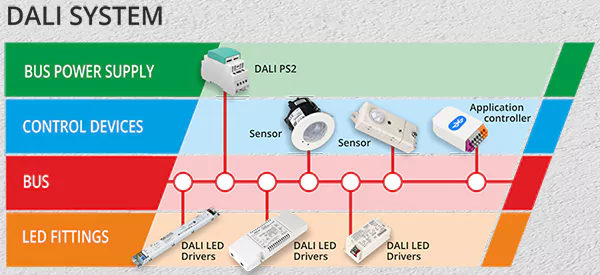
With DALI, the relevant control functions are already integrated into the control gears. Such control gears enable your luminaires to output saturated light colours in your accent lighting. Such light outputs are forms of the colour temperature.
You’re probably wondering how control options apply to DT8 and DT6. Well, DT6 devices are the LED control gears and luminaires, while DT8 devices are colour controllable luminaires. A DALI control line allows you to configure individual control gear and control units, after which you get functions such as addressing, grouping, and setting scenes.
Some of these control options include…
Broadcast Control
This control system requires no grouping of lights, no on-site commissioning, and no individual addressing. Such a system transfers commands using direct brightness values. All luminaires which are physically connected output lights after such values trigger them simultaneously.
All DALI luminaires addressed by broadcast obey commands irrespective of their individual addresses. Therefore at a later point in life, when you need to fix a faulty LED driver, no programming is necessary i.e. you can fix it with ease.
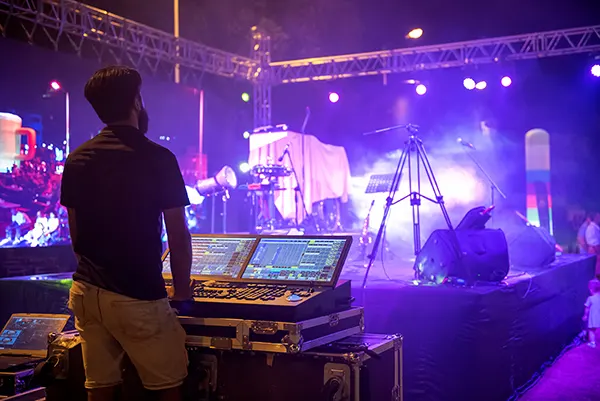
When it comes to DT6, broadcast control is only possible if each color contains galvanically separated lines. It means that each of your desired colors has separately energized lines.
This type of control is very time-consuming for large installations i.e. you will need to define the cable routes and the number of cables you’ll use. You cannot assign luminaires under broadcast control to groups later in life. Furthermore, broadcast control cannot control multichannel control gears and multichannel luminaires for light tracks.
Group and Scene Control
This control requires you to address each luminaire. It requires commissioning where, you identify each of the luminaires before configuring them. Of course, it sounds complex but what is interesting is the fact that the control gear stores the values for each group allocation and the light scene.
Furthermore, to successfully configure a DALI line that operates under group and scene control, you’ll use the Master from a PC software.
Note that: DT8 LED drivers can use a single address for multipath channels while DT6 uses X number of addresses to control the X number of channels.
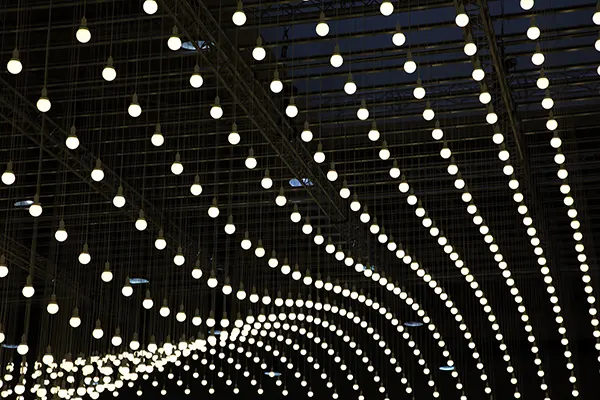
The Four Color Types
Your LED modules will always output a light color depending on four types of color modes. Note that DT8 needs to support at least one of these modes. Furthermore, not every DALI master is similar. Therefore, you should not expect every DT8 compatible master device to control all these four types:
X-Y Coordinate
The DALI master device transmits data serially to the luminaire. Such data involves the X-coordinate and the Y-coordinate, which, in our context, relates to the CIE color space. A CIE color space is a mapping system that combines three color values. Such color values are close to red/green/blue values, which, when plotted in a 3D space they produce color combinations that are friendly to the human eye (perceivable). All the luminaires that are controlled in this mode output the end values synchronically.
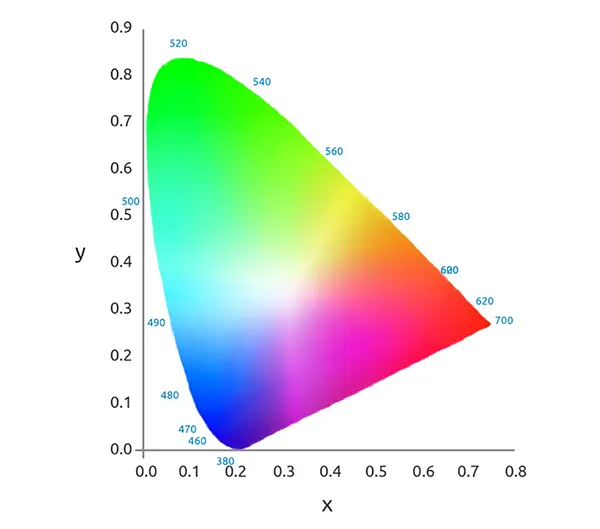
Primary Color N
This mode is perhaps the simplest since it allows for favorably priced color control. It directly controls the color intensity that each luminaire outputs and is commonly used in controlling LED strips.
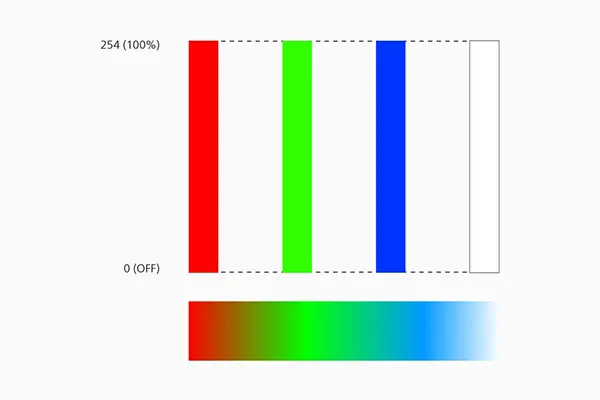
Color Temperature TC with 2 Color Channels
This mode allows the DALI device to transmit directly one color temperature to the luminaires. You can control two, three, or four-channeled luminaries since the respective manufacturers of such LEDs need to adjust the control gear to the primary colors of the luminaires. You can also determine the output value of your luminaires relative to their color temperatures.
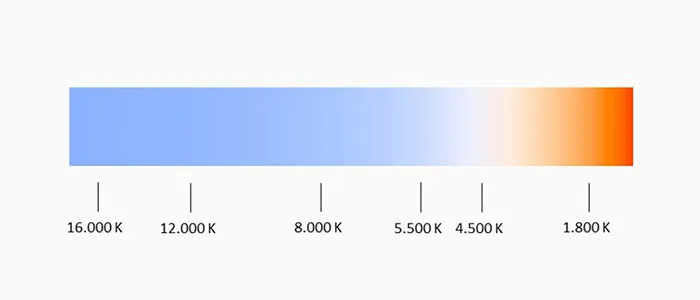
RGBWAF Color
RGBWAF stands for red, green, blue, white, amber, and free color. It represents the six colors that your luminaires can output. This mode allows you to control these six colors for a minimum of 1 and a maximum of 6 channels.
You can control them individually or in combinations. For example, five channels, each with different colors or two sets of 3 channels, each set with a color different from the other set.
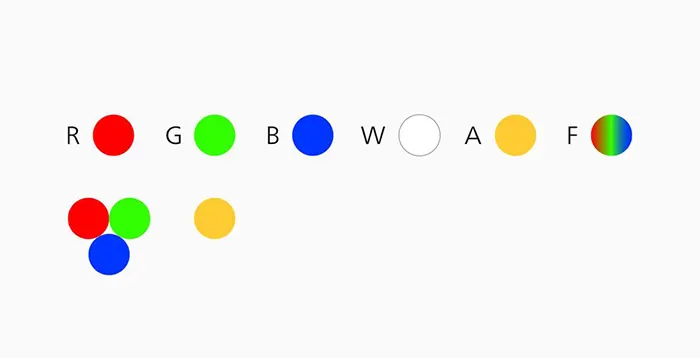
The Concept of Tunable White Control
Tunable white lighting is a flexible control that allows you to control the light output i.e. intensity and color appearance of the white light output. Depending on your mood/preference, DALI enables you to manually/dynamically change the light level and the shade of the white light produced by your LEDs.
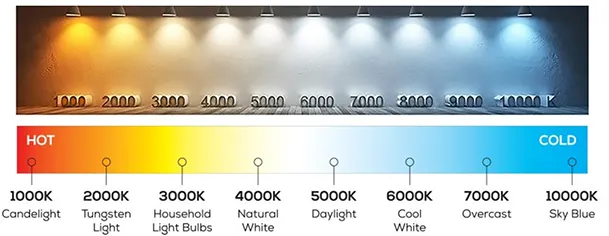
The above four-color types define tunable white lighting. The three colors Red, Green, and blue, can be combined to form a white color. (Refer to the CIE color system above).
The combination of these three colors needs to be expressed in Correlated Color Temperature (CCT). Such a combination, conveyed in CCT, allows us to perceive a white color from Red, Green, and blue. CCT is measured in Kelvin.
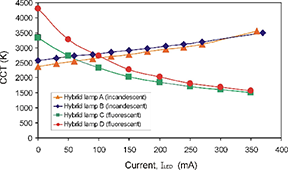
The white color temperature changes from yellowish-white to pure white and finally bluish-white as you move to higher degrees Kelvin. The bluish-white is perhaps the coolest light output that one can find.
When it comes to DT8 and DT6, you can use either of them to achieve tunable white control. Here’s how they differ: DT8 only requires one address while DT6 requires two addresses to produce tunable white lighting.
What does a 2-channel DT6 system consist of ?
DT6 system relates to part 207 of the IEC 62386. This part refers to control gear ~ LED drivers. A DALI DT6 LED driver designation should use a separate DALI-2 address for every channel in each product or ensure that an SSL system performs according to a predetermined chromaticity intensity curve.
IEC requirements for this part, specifies a bus system for control by digital signals of electronic lighting, which is in line with the requirements of IEC 61347(all parts), including DC supplies. Now a 2-channel DT6 system comprises of the following for it to function effectively:
- Two independent DALI channels
- Output currents which can be set variably using DALI for each channel
- A one for all interface for flexibility
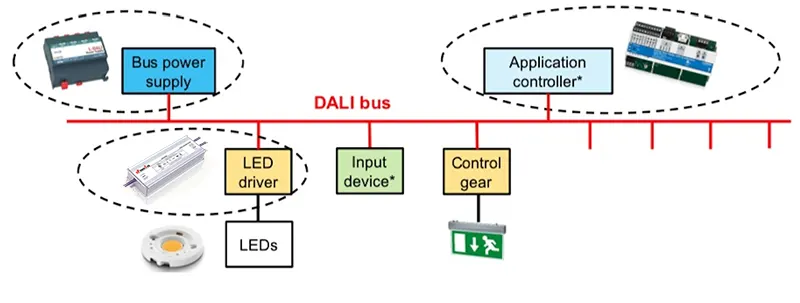
What does a DALI DT8 system consist of ?
DALI DT8 controller allows you to change the color temperature using one address. DALI DT8 commands can include the command to adjust the intensity of brightness of a luminaire relative to the RGB/RGBW commands.
DT8 LED driver relates to part 209 of the IEC standard and it uses a single address for dual channels. A DALI DT8 system comprises:
- 1 DALI address
- Output currents that can be adjusted using DALI
- One for all interface for flexible control
DALI DT8 Kit System
This type varies slightly from DT8 system since it contains:
- 1 DALI address
- Output currents that cannot be set
- High color consistency
- Constant color temperature over the whole dimming range
- One for all interface
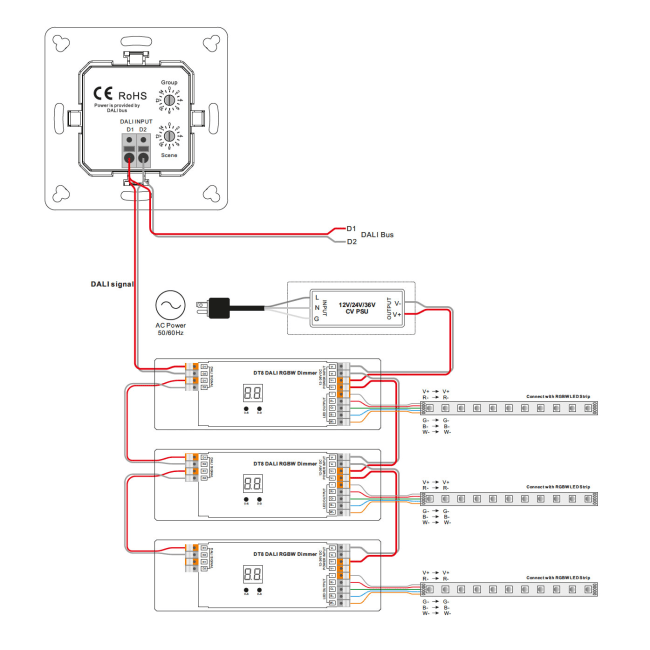
The difference between DALI DT8 and DALI DT6
Let us summarize the difference between these two in fewer characters:
| DALI DT6 | DALI DT8 | |
|---|---|---|
| Types of devices | LED control gears and luminaires are assigned to DT6 | It is for color-controllable luminaires |
| Addresses and Channels | It requires a single address for a single channel. For example, It would use one address to dim the color temperature and another one address to dim the light intensity. It can also use multiple addresses say Y number of addresses for Y number of channels. | It can use one address for two channels. For example, a one address DT8 controller can dim the color temperature as well as control the light intensity. |
| Protocols | It complies to IEC 62386 requirements of 101, 102, and 207 | It complies to IEC 62386 requirements of 101, 102, 207, and 209 |
Summary
We can safely admit that DT8 saves on time, manpower, space, complexity, and costs because:
- DALI DT8 fixture uses a single DALI short address to manage two or more outputs on a special DALI DT8 LED driver. Therefore, it significantly reduces the number of such addresses and LED drivers for the color-changing control.
- For Tunable white control, DALI DT8 only requires one address, while DALI DT6 requires two addresses.

